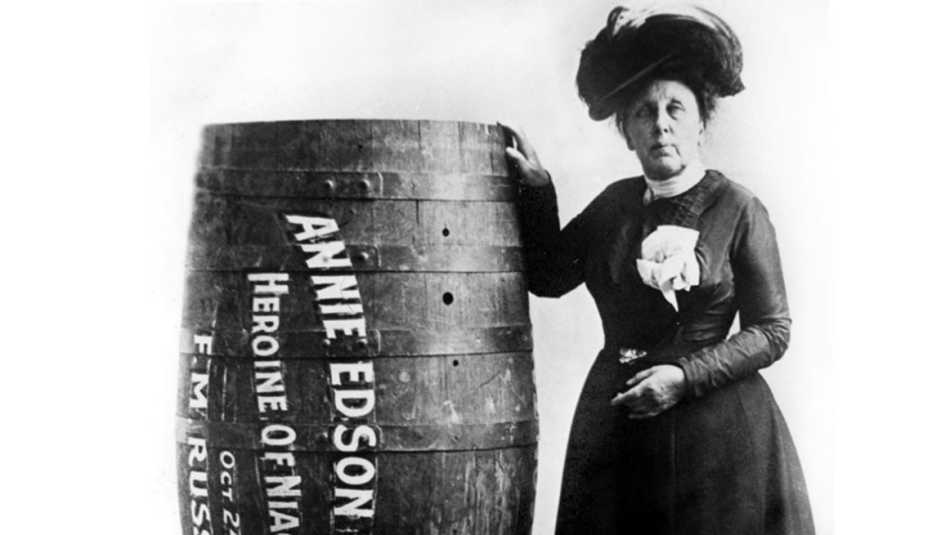Staying Fit


In 1901, Annie Taylor was the first person to go over Niagara Falls in a barrel and live to tell the tale. Sadly, no one was there to listen.
Why do I want you to know Annie Taylor’s story? Because it’s more than the account of a daredevil stunt. There is something quintessentially American about it, and also something disturbing in what it says about a long-standing attitude toward a large segment of the population that has never really gotten a fair shake — older working-age women. Her story matters to me because Annie turned 63 the day she went over the falls.


AARP Membership— $12 for your first year when you sign up for Automatic Renewal
Get instant access to members-only products and hundreds of discounts, a free second membership, and a subscription to AARP the Magazine.
Born in Auburn, N.Y. — not far from where I served as president of Wells College for 18 years, and also near Seneca Falls, birthplace of the Women’s Suffrage Movement — Annie had been a schoolteacher but then fell on hard times after her husband died. She moved to Michigan, tried opening her own dance studio, taught music for a while, and even traveled to Texas and then Mexico looking for work. But hard times just got harder.
In an admittedly desperate attempt to avoid living her last years in poverty, Annie latched onto the notion of being the first person to go over Niagara Falls and live. Sure it was a crazy idea, but daredevils were making money those days, and she decided to take a chance. She had a carpenter custom-design a reinforced, mattress-lined barrel for her, and on her 63rd birthday, Oct. 24, she climbed in, was sealed inside, and was launched over the falls.
She came out down below Horseshoe Falls bruised, battered but alive. We can only assume that she was also buoyed by the thought of the accolades about to shower down on her. She had even hired a manager to handle the publicity.
But the accolades never came. In fact, not long after, her manager absconded with the famous barrel and began touring the country with a much younger woman he claimed was Annie. Annie kept on trying to make ends meet. She posed for photographs at a souvenir stand, tried her hand at the stock market, began a novel and worked as a clairvoyant. Looking at her efforts, you really get the sense that she was keeping her dreams of success alive.
Why did Annie never receive acclaim? Joan Murray, who has written a narrative poem about Annie’s exploit, may have put her finger on the problem: “She didn’t look right. She didn’t look like a hero…She was your grandmother.”
I’d like to think that nowadays a grandmother would be as much lauded as, say, a younger woman — or even a man — for such an adventurous act. Perhaps she would. But in many important ways, older women still have the cards stacked against them and still fall prey to stereotyping that holds them back.

































































More on politics-society
A Conversation With Charles Bolden
U.S. space commander talks about visiting Mars, threats from asteroids and international collaboration in space